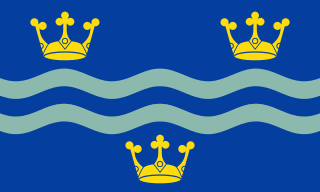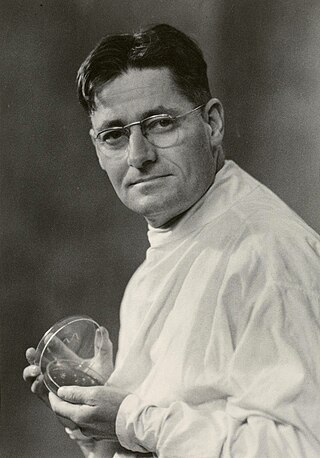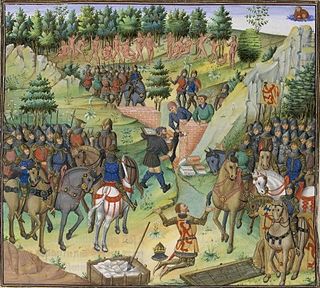
Cambridgeshire is a ceremonial and non-metropolitan county in the East of England government statistical region, and popularly known as one of the three counties of East Anglia. The largest city is Peterborough, followed by the county town of Cambridge. In 1974, modern Cambridgeshire was created through the amalgamation of Cambridgeshire and Isle of Ely with Huntingdon and Peterborough, which including the historic counties of Huntingdonshire and the Soke of Peterborough. A majority of the county is locally governed by Cambridgeshire County Council in combination with the lower tier non-metropolitan district councils of Cambridge, East Cambridgeshire, Fenland, Huntingdonshire, and South Cambridgeshire. Peterborough however is governed as a unitary authority with one council, Peterborough City Council. It is bordered by Lincolnshire to the north, Norfolk to the north-east, Suffolk to the east, Essex and Hertfordshire to the south, and Bedfordshire and Northamptonshire to the west.

Howard Walter Florey, Baron Florey was an Australian pharmacologist and pathologist who shared the Nobel Prize in Physiology or Medicine in 1945 with Sir Ernst Chain and Sir Alexander Fleming for his role in the development of penicillin.

Gog and Magog appear in the Bible and the Quran as individuals, tribes, or lands. In Ezekiel 38, Gog is an individual and Magog is his land; in Genesis 10, Magog is a man and eponymous ancestor of a nation, but no Gog is mentioned; by the time of Revelation 20:8 Jewish tradition had long since changed Ezekiel's "Gog from Magog" into "Gog and Magog".

Guildhall is a municipal building in the Moorgate area of the City of London, England. It is off Gresham and Basinghall streets, in the wards of Bassishaw and Cheap. The building has been used as a town hall for several hundred years, and is still the ceremonial and administrative centre of the City of London and its Corporation. It should not be confused with London's City Hall, the administrative centre for Greater London. The term "Guildhall" refers both to the whole building and to its main room, which is a medieval great hall. The nearest London Underground stations are Bank, St Paul's and Moorgate. It is a Grade I-listed building.

Little Trees Hill is one of the highest points of the Gog Magog Hills, a ridge of low chalk hills extending for several miles to the south-east of Cambridge in England. Unusually for a Cambridgeshire hill, its summit is reachable on foot, thanks to permissive open access. A footpath runs from the Magog Down car park on Haverhill Road, Stapleford, across the managed meadow called North Down, to the top. The highest point are behind a fence in a wood, but most visitors survey the view from the seats by the fence.

The Gog Magog Hills are a range of low chalk hills, extending for several miles to the southeast of Cambridge in England. The highest points are situated either side of the A1307 Babraham Road, and are marked on Ordnance Survey 1:25000 maps as "Telegraph Clump" at 75 m (246 ft), Little Trees Hill and Wandlebury Hill, both at 74 m (243 ft). The area as a whole is undefined but is roughly the elevated area lying north west of the 41 m (135 ft) col at Worsted Lodge.

Hampton Court Park, also known as Home Park, is a walled royal park managed by the Historic Royal Palaces. The park lies between the gardens of Hampton Court Palace and Kingston upon Thames and Surbiton in south west London, England, mostly within the post town of East Molesey, but with its eastern extremity within the post town of Kingston. In 2014, part of the park was designated a biological Site of Special Scientific Interest. It takes up most of the final (lowest) meander of the non-tidal reaches of the River Thames and is mainly divided between a golf course, meadows interspersed with trees used for deer, seasonal horse grazing and wildlife. A corner of the park is used annually for the Hampton Court Flower Show and the part nearest to the palace has the Long Water — an early set of hydro-engineered ponds or lakes, fed by water from the distant River Colne, as are the bodies of water in the neighbouring park, Bushy Park.

Magog is a fictional character in the comic books published by DC Comics, generally as an enemy and foil personality of Superman. He first appeared in Kingdom Come #1, and was created by Mark Waid and Alex Ross. In 2009, Magog was ranked as IGN's 75th-greatest comic book villain of all time. In Kingdom Come, Magog's lack of the conventional heroic qualities of idealism puts him at odds with Superman's morality. After taking over Superman's place within the world's superhero community, his reckless actions with other would-be superheroes ultimately caused a nuclear disaster in the Midwestern United States; overwhelmed by guilt, he then realizes that Superman was right and seeks to atone for his crimes. In 2008, a parallel universe version of the character is introduced in DC Comics' main continuity; his destiny seemingly parallel to the original version's and some fear him due to their awareness of his counterpart's actions, yet granting him a benefit of doubt to prove himself as a true hero differing from his doppelgänger.

Edgbaston Pool is a Site of Special Scientific Interest located in Edgbaston, Birmingham, England. It is one of 23 SSSI's in the West Midlands. The site has two distinct units (areas) within it. The first is water-related and contains the 7 hectares lake and the input channel of the Chad Brook as well as some land that is either marsh or lake depending on the season. The second, the smaller section is woodland. In total the site measures 15.93 hectares.
The Sir William Dunn School of Pathology is a department within the University of Oxford. Its research programme includes the cellular and molecular biology of pathogens, the immune response, cancer and cardiovascular disease. It teaches undergraduate and graduate courses in the medical sciences.
Christian Arthur Edgar "Tim" O'Brien was a British exploration geologist and author. In 1936 he was also involved in the discovery of the Chogha Zanbil ziggurat in Southern Iran. Appointed by BP In 1967, he retired in 1971 as chairman of the boards and general managing director of the Iranian Oil Operating Companies, stationed in Tehran, and was appointed a CBE for services to the oil industry.
The Gog Magog Games or Gog Magog Olympiks were held annually on the Gog Magog Hills outside Cambridge, England in the 16th and 17th century.

Gogmagog was a legendary giant in Welsh and later English mythology. According to Geoffrey of Monmouth's Historia Regum Britanniae, he was a giant inhabitant of Albion, thrown off a cliff during a wrestling match with Corineus. Gogmagog was the last of the Giants found by Brutus and his men inhabiting the land of Albion.

London Scottish Golf Club near the windmill on Wimbledon Common is the third oldest golf club in England.

Wandlebury Hill Fort, also known as the Wandlebury Ring, is an Iron Age hillfort located on Wandlebury Hill in the Gog Magog Hills, Cambridgeshire, England, to the southeast of Cambridge. Now a country park, it was the most important of three hillforts in the downs.
Herbert Bertram Strong was an English professional golfer. He was an organizer and founding member of the PGA of America and later became a successful golf course architect. As a player, Strong's best finish in a major championship was ninth place in the 1913 U.S. Open.

Gog Magog Golf Course is an 88.4-hectare (218-acre) biological Site of Special Scientific Interest on Gog Magog Golf Club south-east of Cambridge in Cambridgeshire.

Northward Hill is a 52.5-hectare (130-acre) biological Site of Special Scientific Interest Kent. It is a Nature Conservation Review site, Grade 2, and is also designated High Halstow National Nature Reserve The site is managed by the Royal Society for the Protection of Birds.

Thetford Golf Course and Marsh is a 122.3-hectare (302-acre) biological Site of Special Scientific Interest on the western outskirts of Thetford in Norfolk. It is a Nature Conservation Review site, Grade 2, and part of the Breckland Special Area of Conservation and Special Protection Area.
















